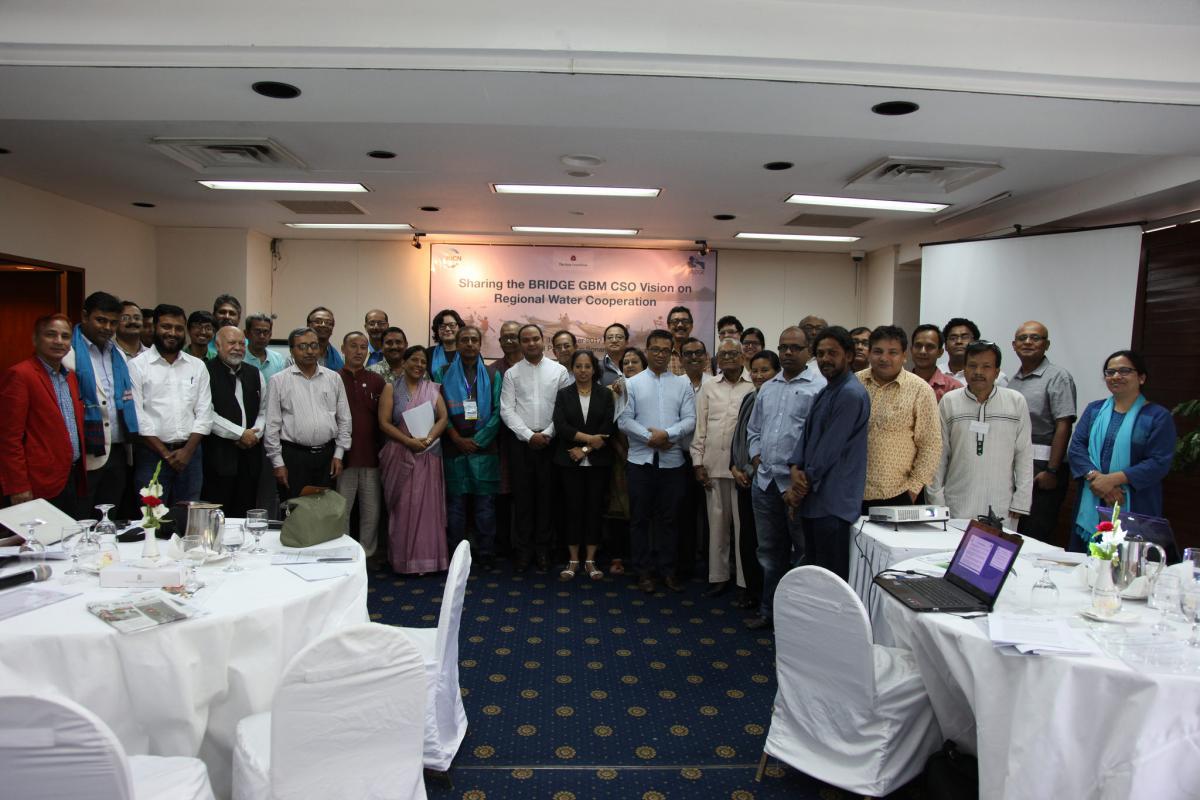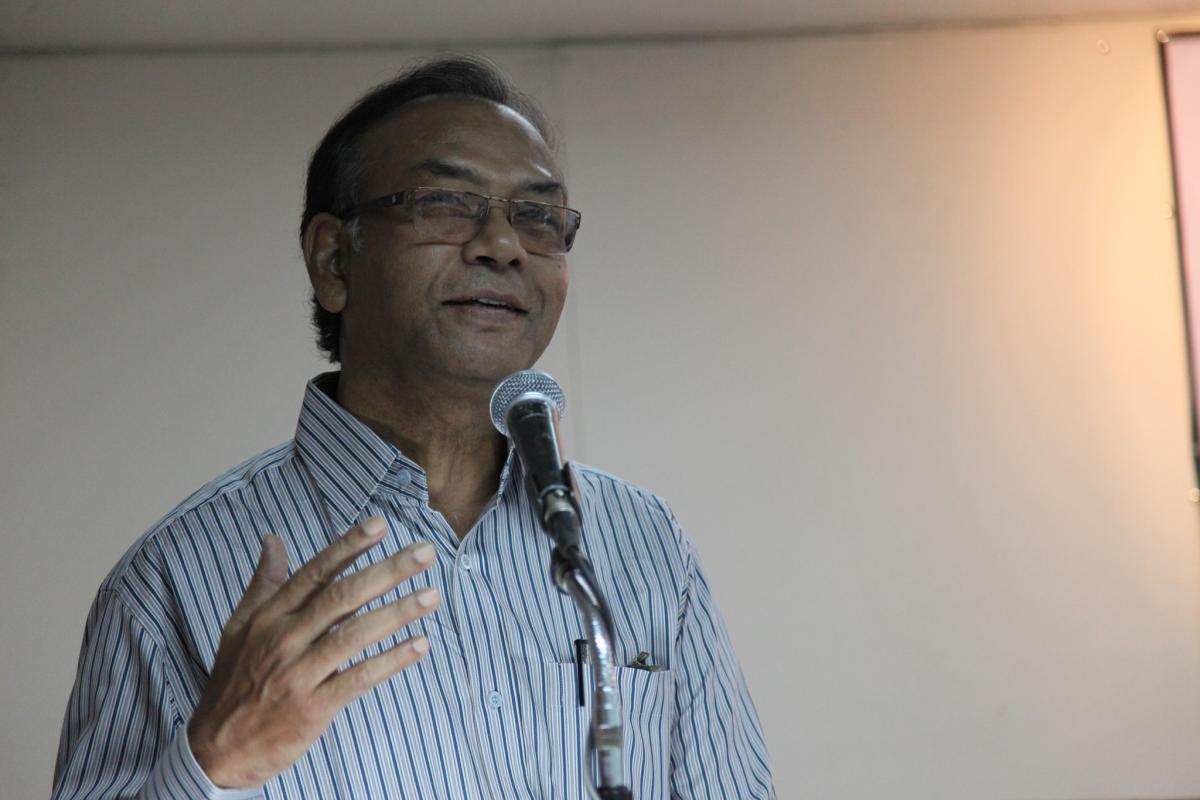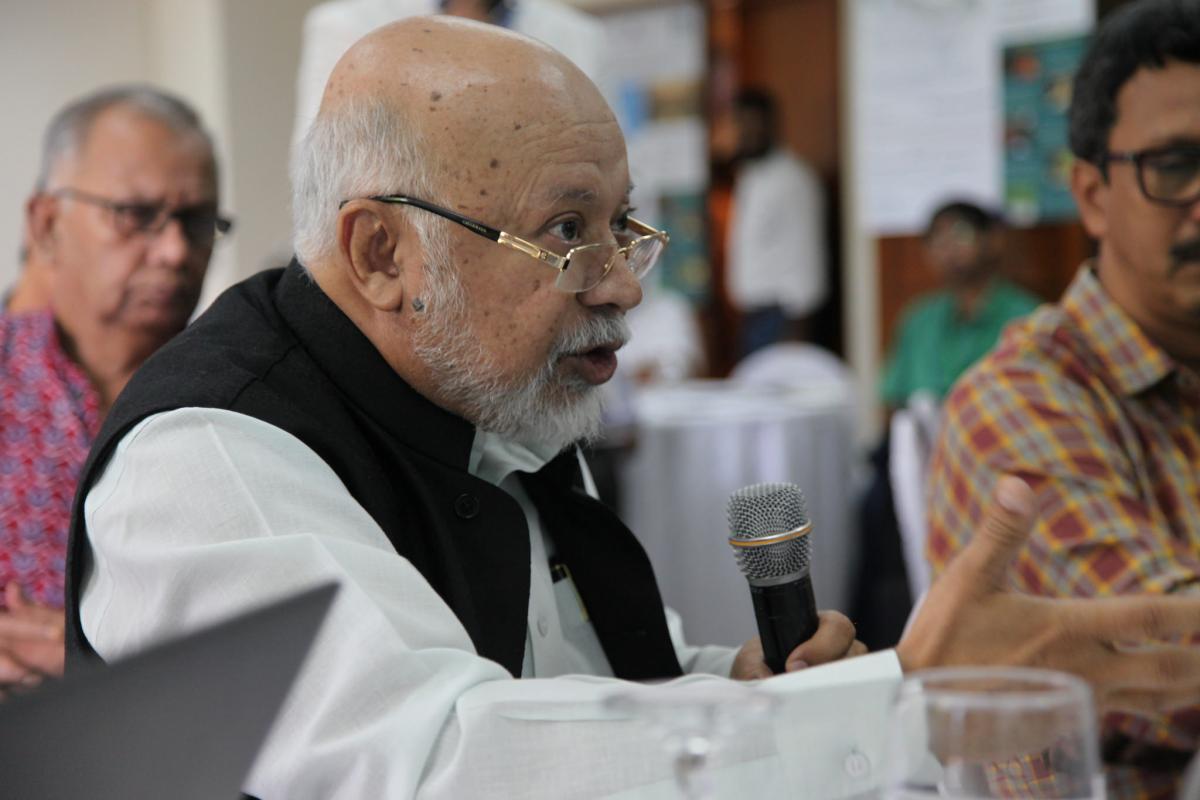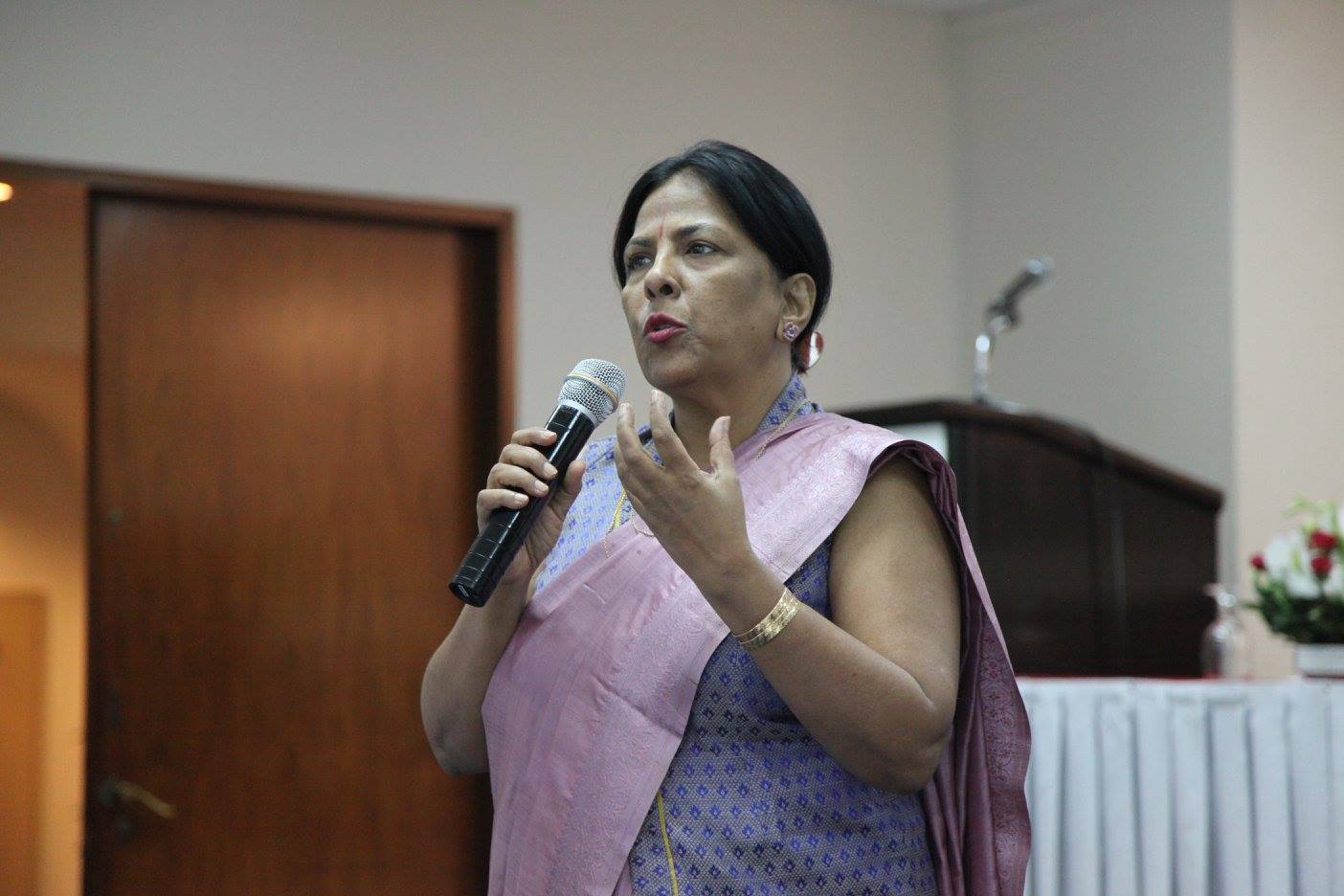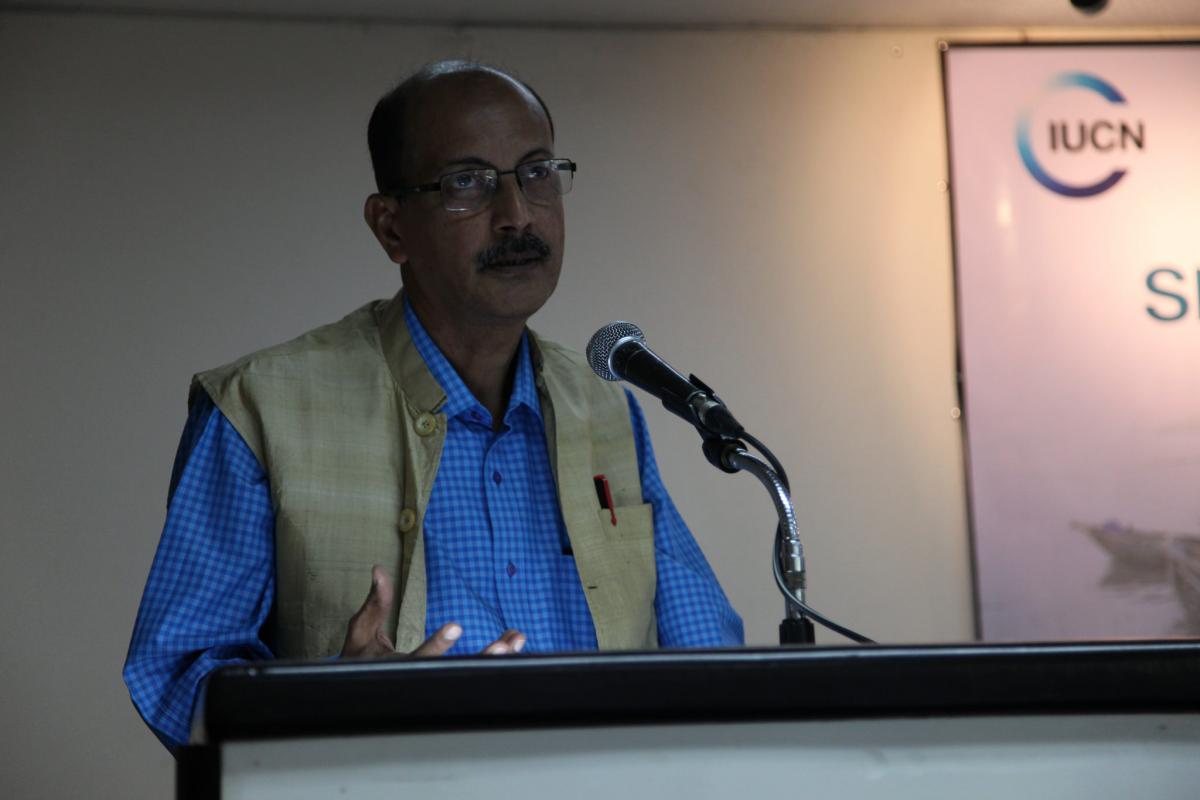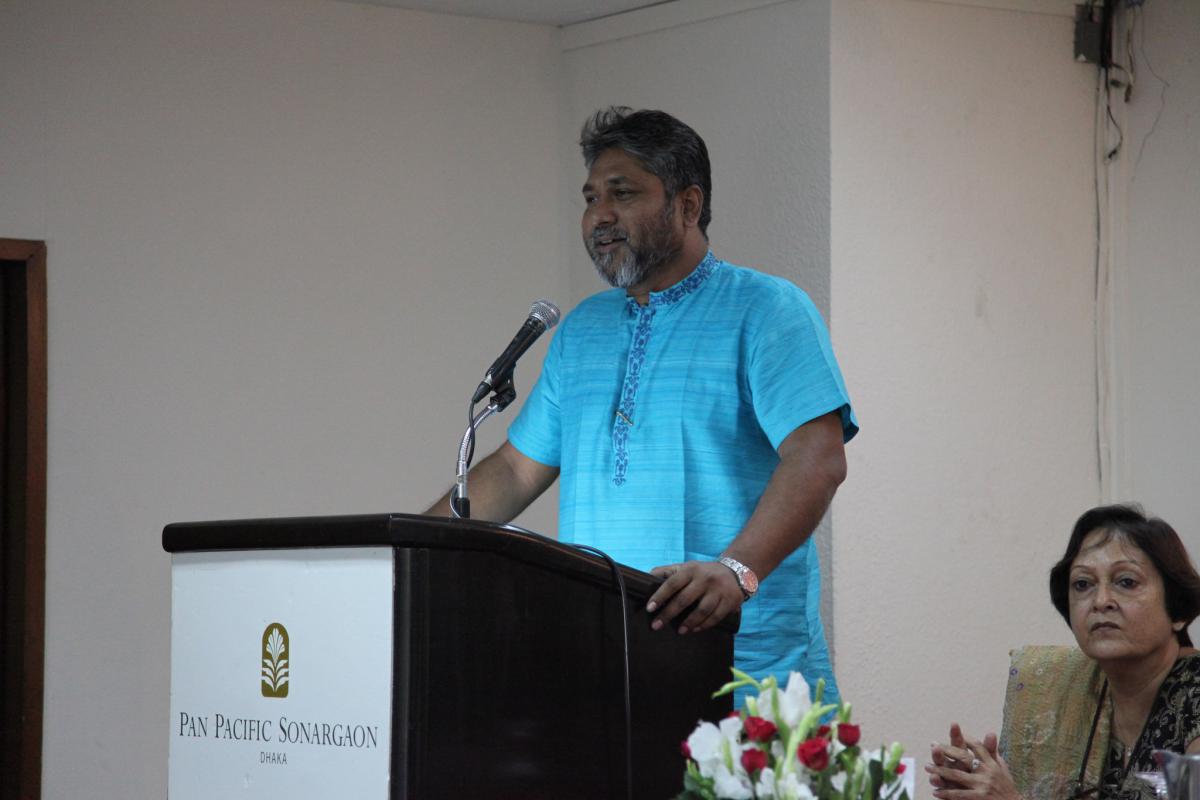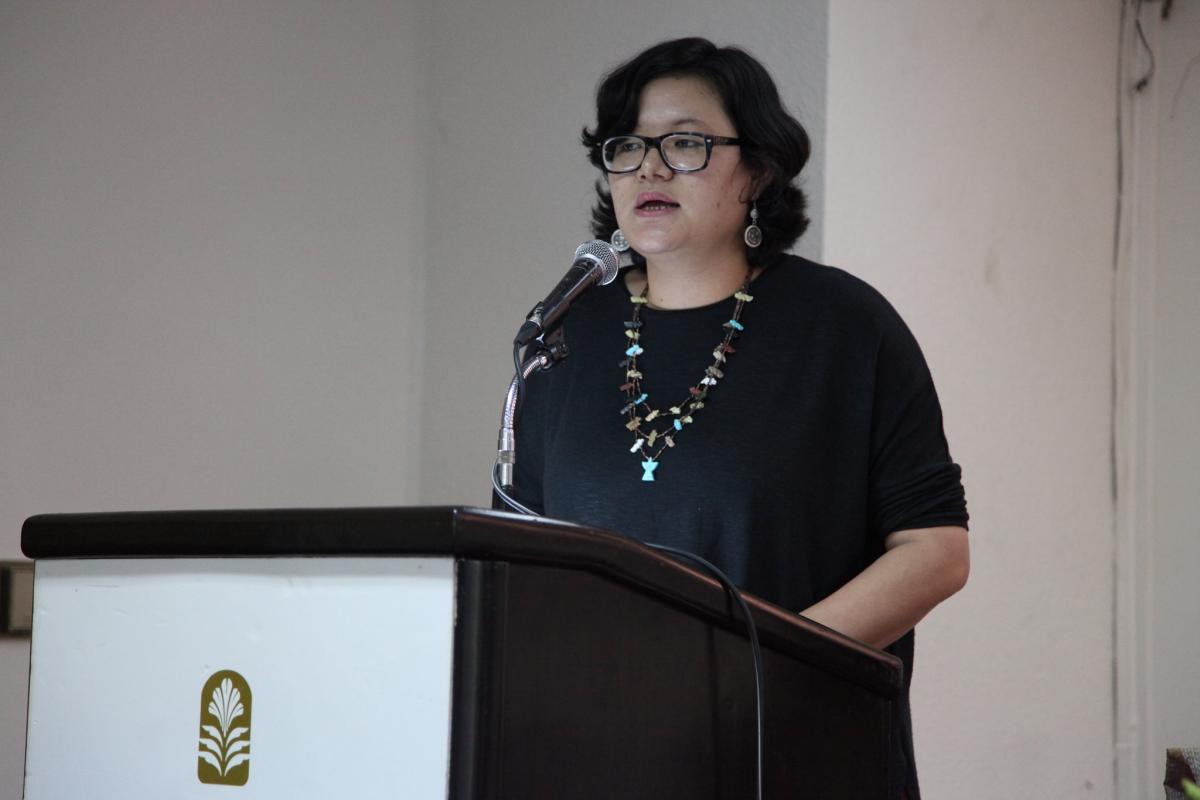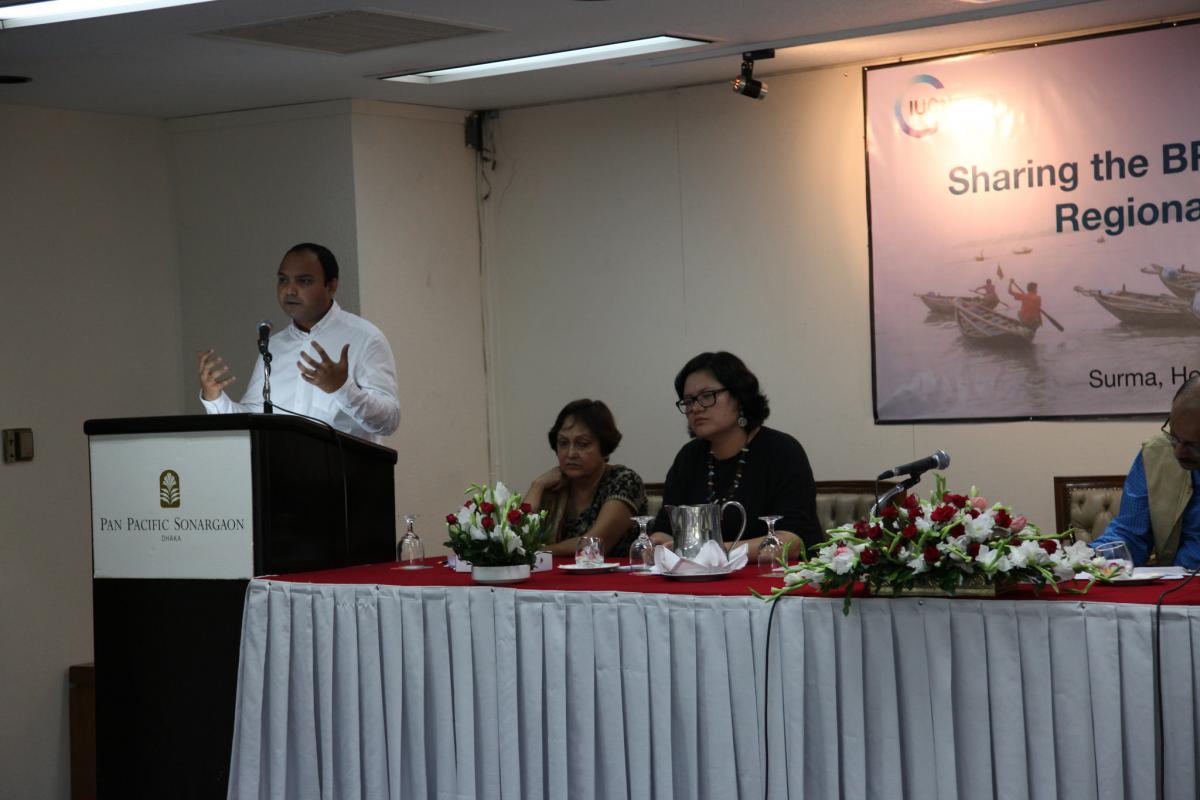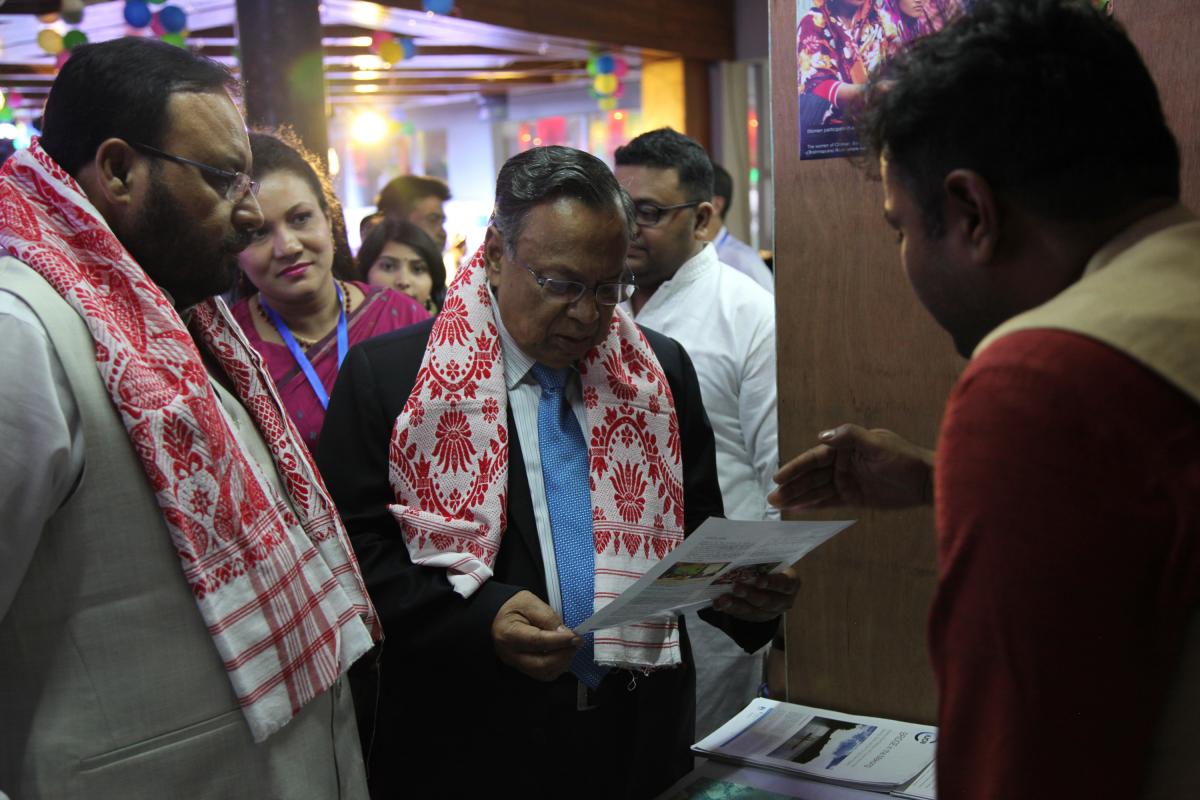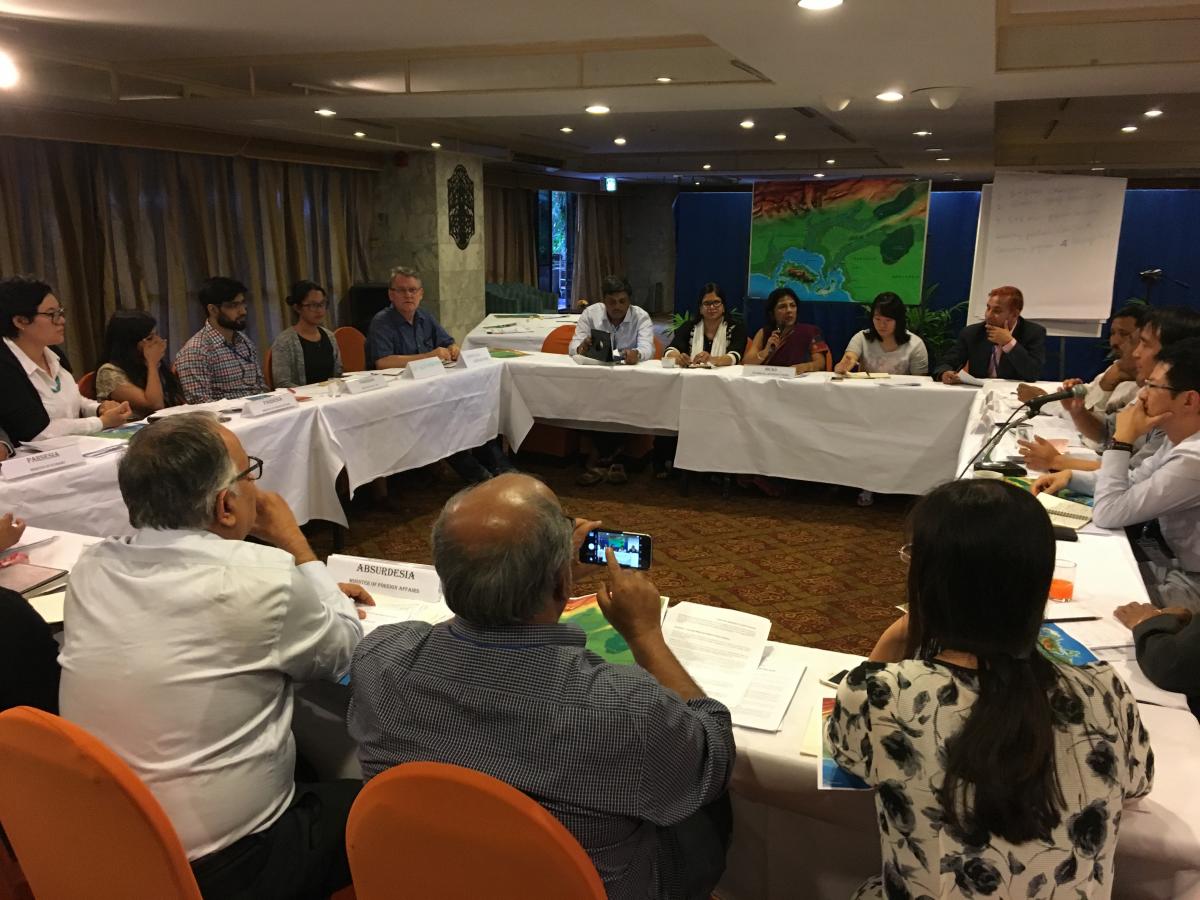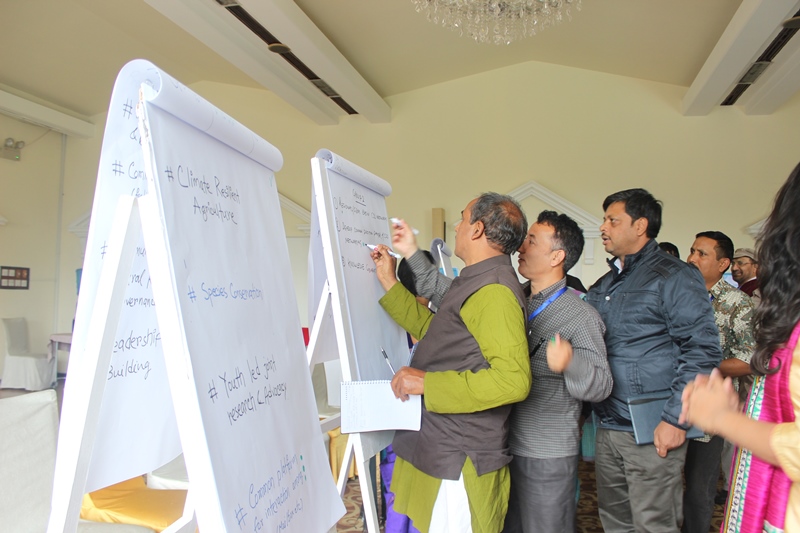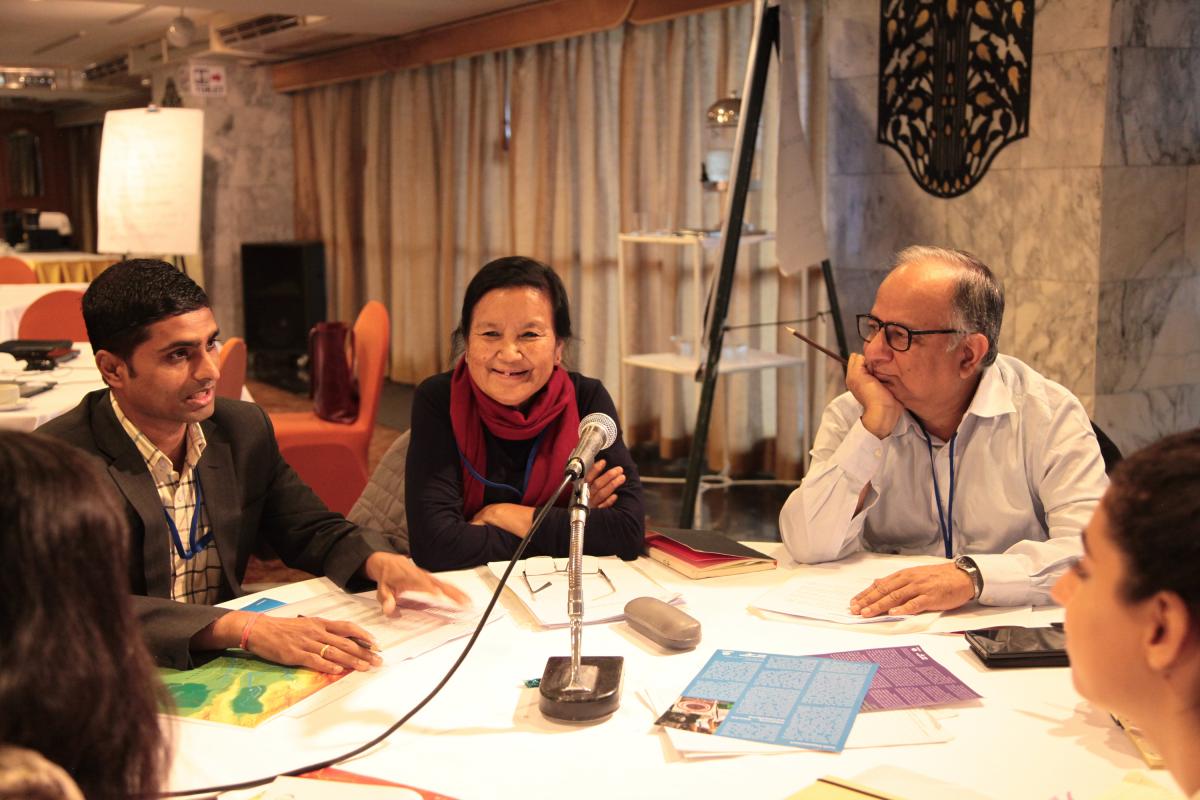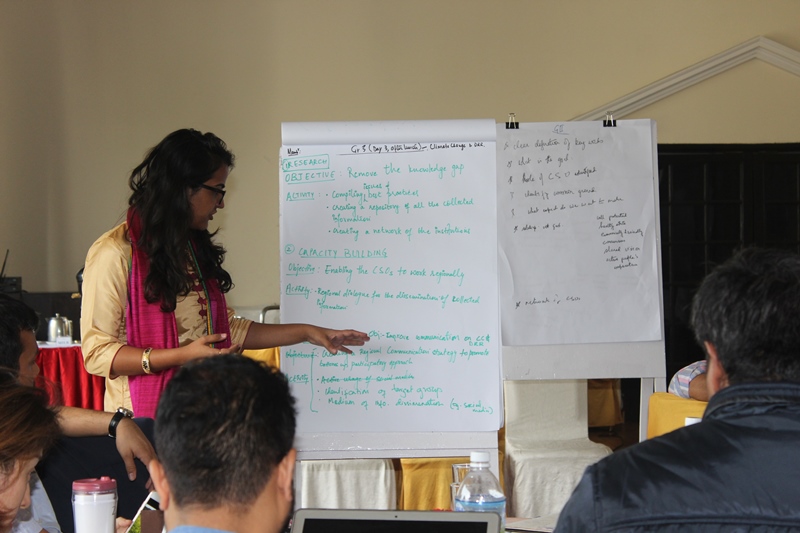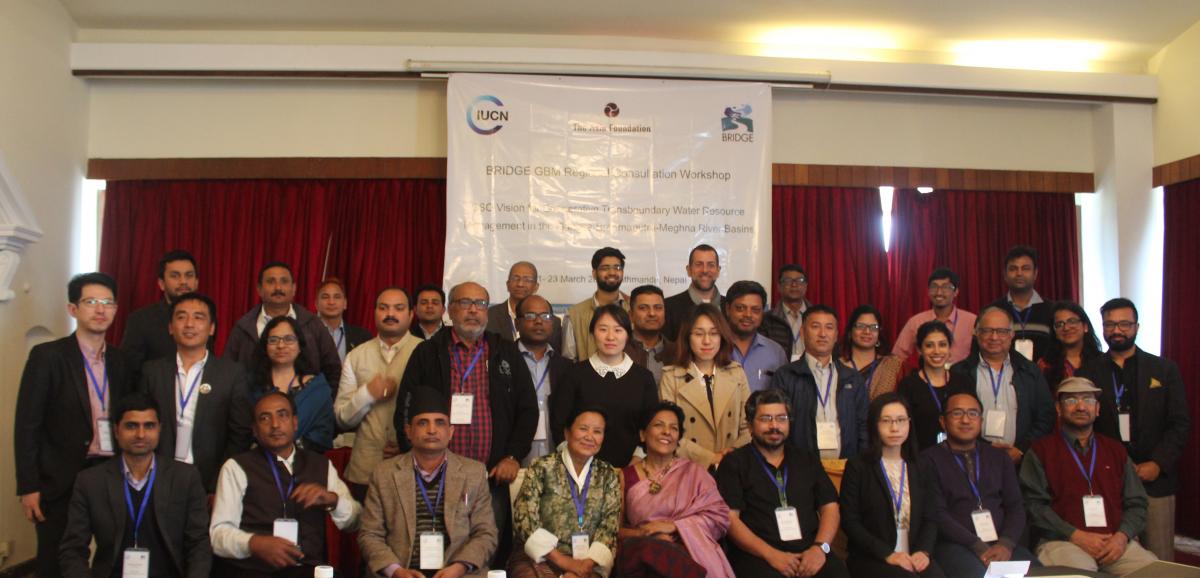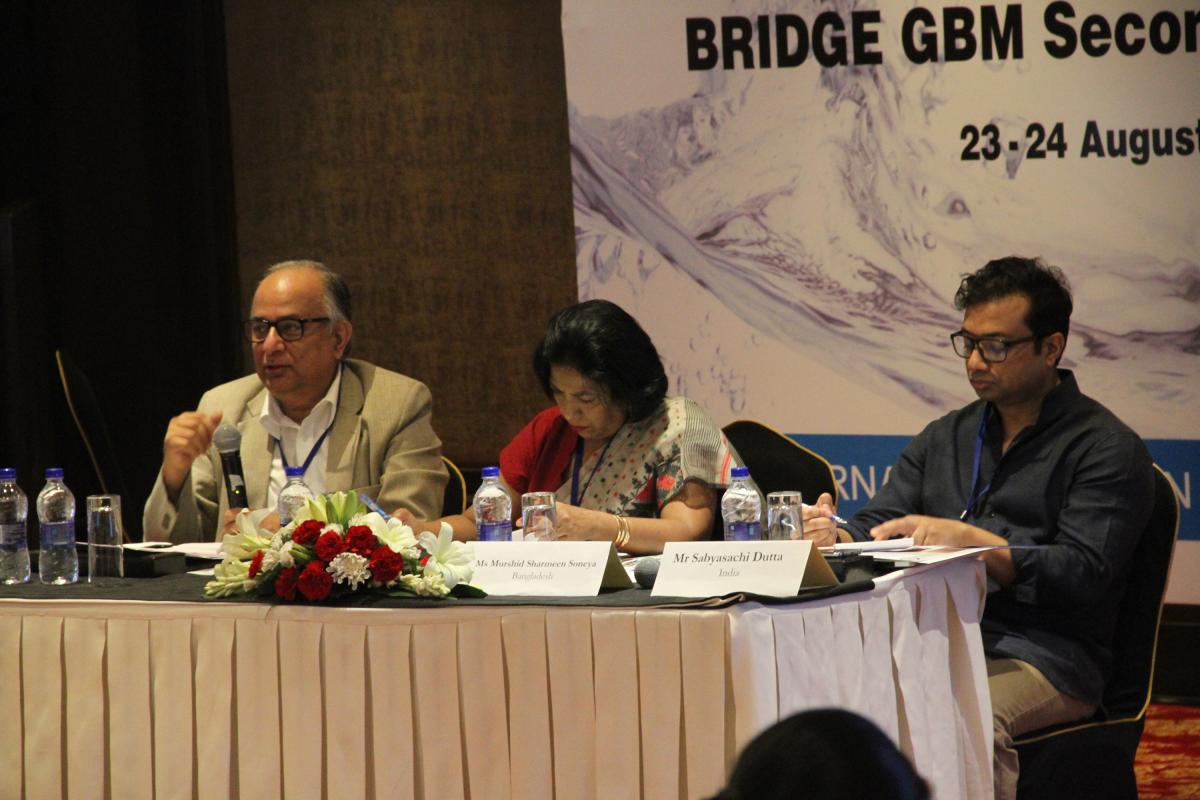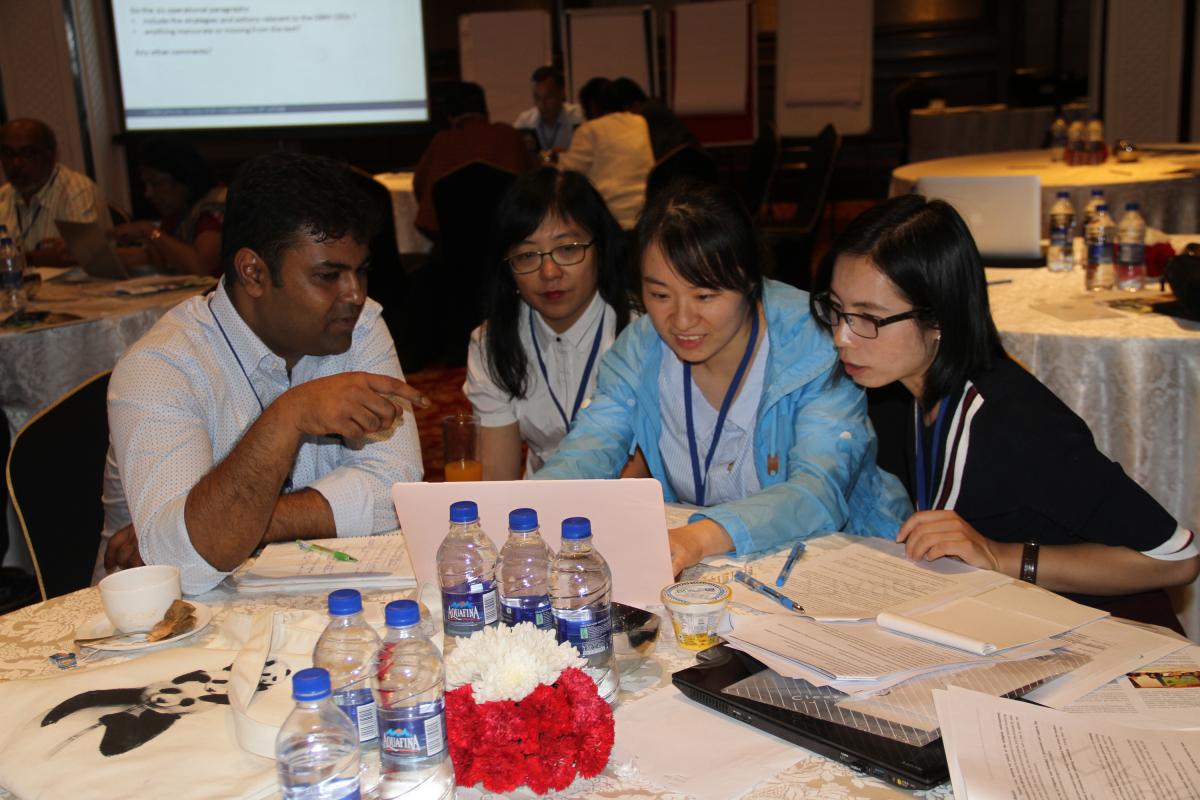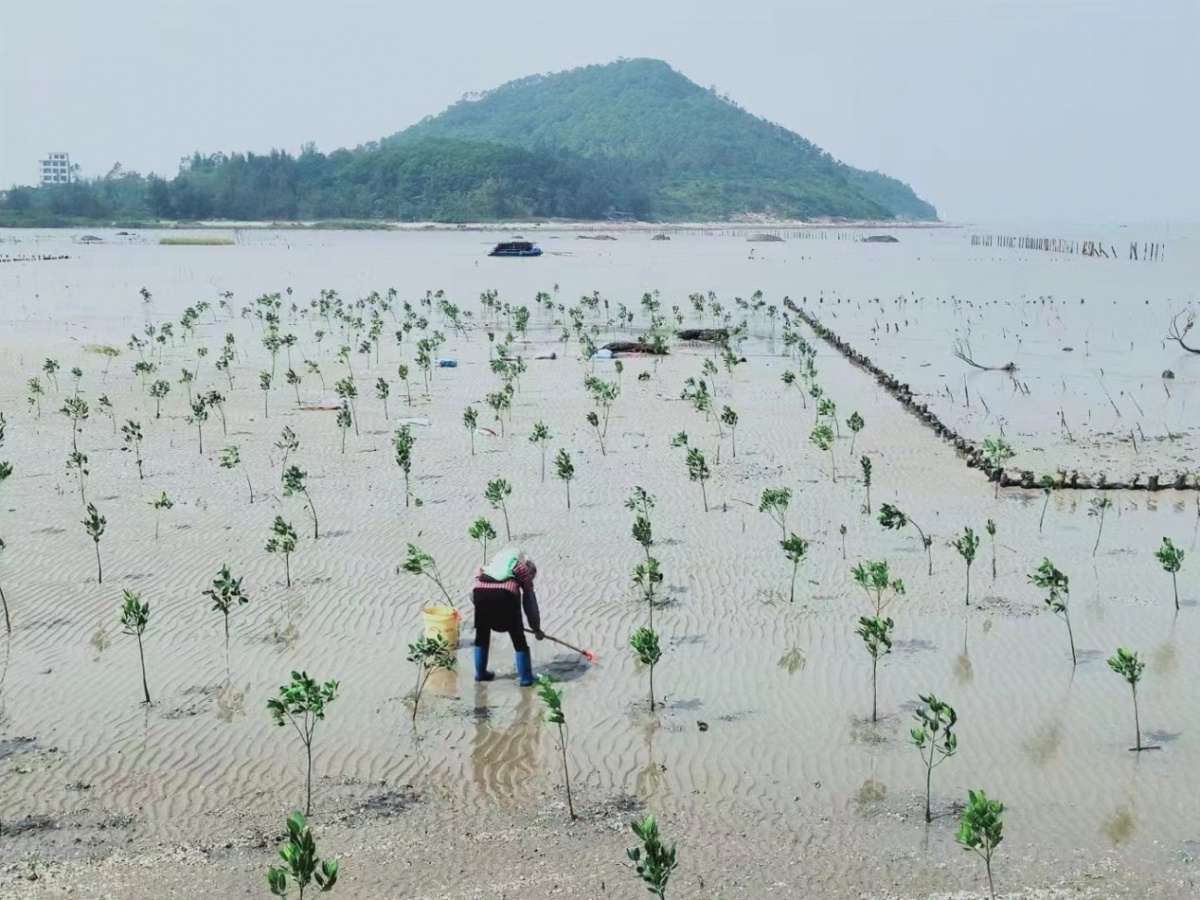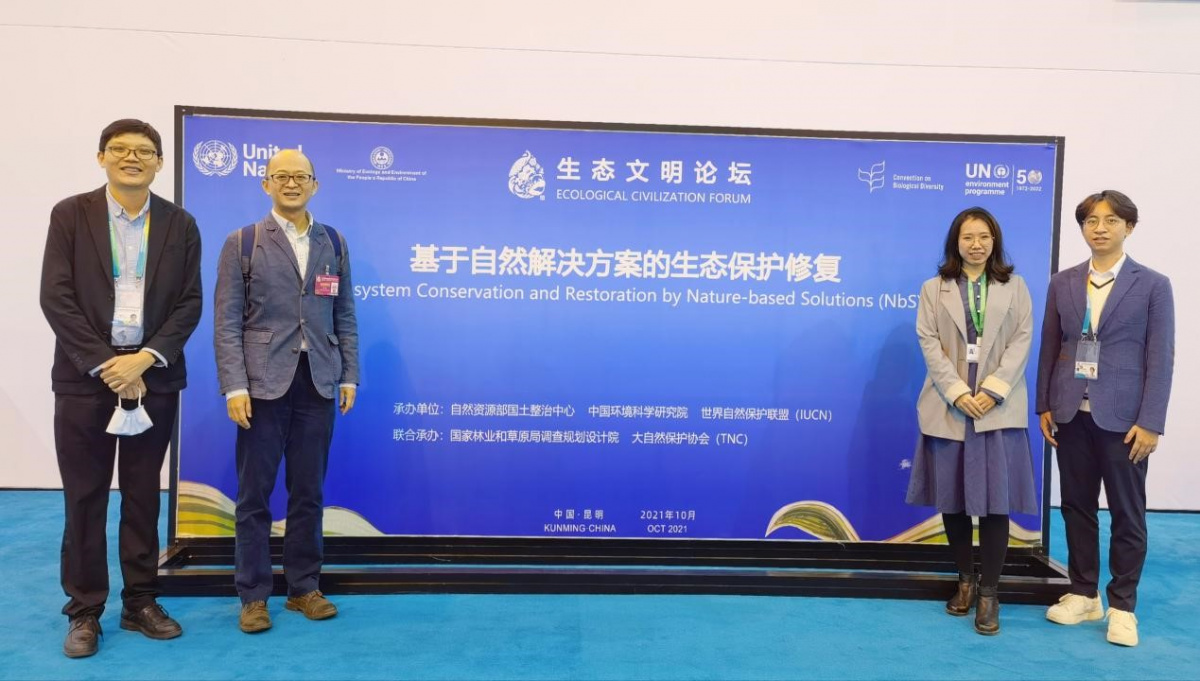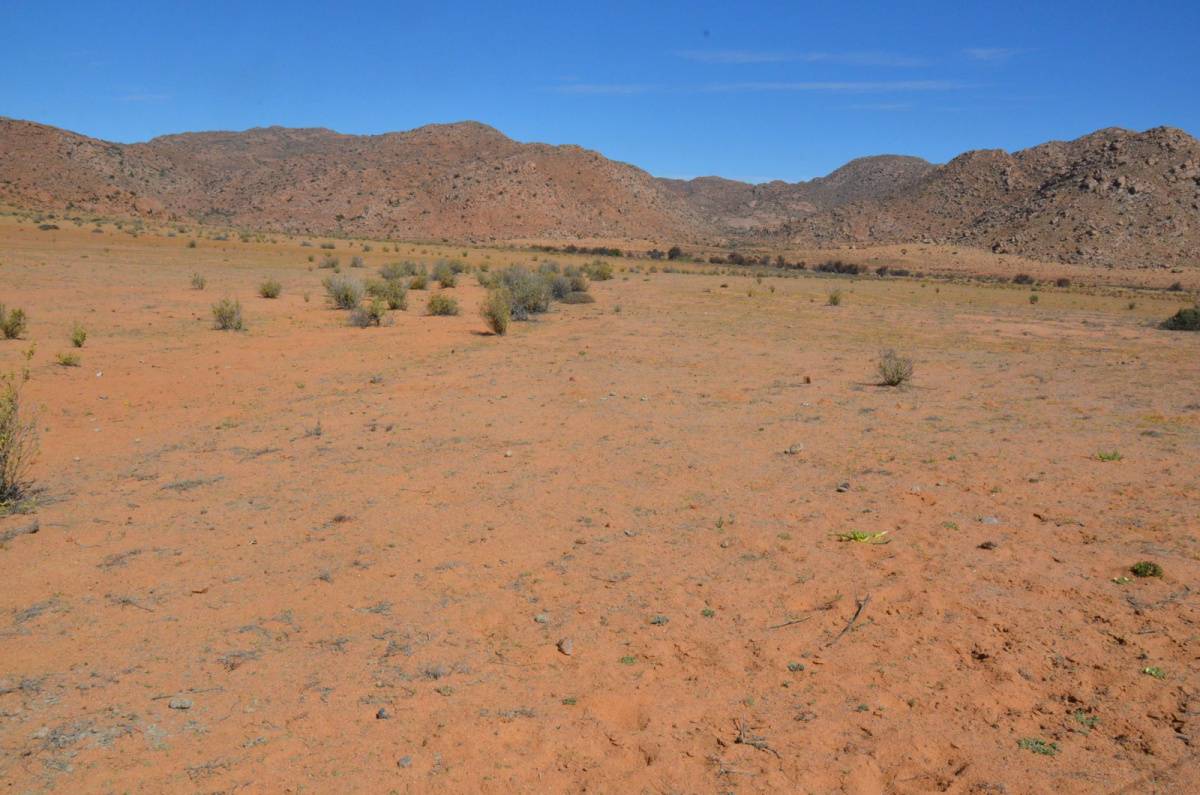Civil Society Organisations launch vision for cooperative governance of the Ganges-Brahmaputra-Meghna Basins
Cooperative governance of the Ganges Brahmaputra Meghna Basins (GBM) region was strengthened through the recent launch of a Civil Society Organisation (CSO) vision for improved transboundary water management. The vision, which was developed by a network of over 25 CSOs from Bangladesh, Bhutan, India, China and Nepal, was launched at the NADI 2 Friendship Forum Dialogue in Dhaka, Bangladesh, on 10 October.
The development of the CSO vision represents a milestone for transboundary water governance in the region as it was the first time that CSOs joined forces and took the lead in developing a common agenda and action plan for the management of the GBM Basins.
“Establishing a CSO vision for the GBM is one of the ways in which we can ensure that our river basins are managed sustainably and in a way that continues to benefit the millions that rely on them,” said Murshid Sharmeen Soneya, Executive Director for Brotee, a CSO based in Bangladesh. “Trans-boundary dialogues and mechanisms to enable transfer of knowledge and sharing of experiences on water governance are key to ensuring the wise use and conservation of these ecosystems for future generations.”
Developed through several regional dialogue and consensus-building workshops facilitated by the IUCN Building River Dialogue and Governance for civil society organisations in the Ganges-Brahmaputra-Meghna river basins (BRIDGE GBM) programme, the vision – with “A common ecosystem, a shared heritage, and a joint destiny” as its tagline – advocates for the equitable utilisation of shared river resources in the GBM basins based on consensus and cooperation at local, national, regional and international levels.
Through the sessions, 21 cross-cutting action points were identified under five themes: capacity-building; trans-boundary cooperation; communication, outreach, and advocacy; research and knowledge; and policy and legislation.
The overall aim of the five themes is to develop and support mechanisms for cross-border dialogues at local, national and regional levels and to ensure that existing information and knowledge can be shared and applied effectively and efficiently.
 Photo: © IUCN
Photo: © IUCN
Following the launch of the CSO vision, members of the GBM CSO network discussed the initial steps required to institutionalise the network.
Key suggestions include having IUCN act as the Secretariat for the GBM CSOs network, getting formal endorsements from the civil society organisations and encouraging network members to communicate with one another on a regular basis through email and social media networks.
The Ganges, Brahmaputra and Meghna rivers connect five countries: Bangladesh, Bhutan, China, India and Nepal. The GBM, which supports the livelihoods of over 620 million people, is the third largest freshwater outlet to the ocean, and is the third most biodiverse river basin in the world after the Amazon and the Congo.
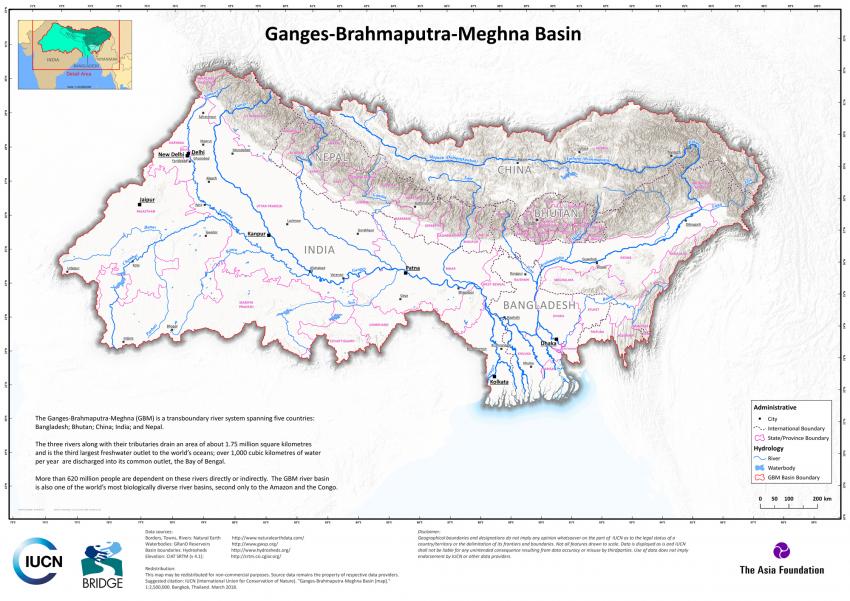 Map of the GBM River Basin
Photo: © IUCN
Map of the GBM River Basin
Photo: © IUCN
The management of water resources in the GBM region faces many challenges, stemming from its very diverse socio-ecological context, the lack of basin-level thinking in planning processes, and the absence of common legal and institutional frameworks to support cooperative water governance. All of these factors contribute to a low level of trust and cooperation among the riparian countries when it comes to participating in water-related dialogues and policy discourse.
However, most of the countries in the GBM basin have a vibrant civil society and a diverse array of local and national groups who are already participating in development activities related to water and rivers. CSOs have the benefit of informal and formal knowledge sharing, and the capacity to enhance decision-making and implementation frameworks by supporting their respective governments. A number of documented community efforts and local initiatives in water resources management in the GBM basins could successfully feed a regional dialogue, enabling replication of lessons learned.
“In the GBM region, a large number of local civil society organisations have the potential to play a much greater role in promoting cooperative hydro-diplomacy and sustainable transboundary water management,” said Vishwaranjan Sinha, Programme Officer, IUCN Asia.
Funded by The Asia Foundation, the BRIDGE GBM project started in July 2016 and is now entering its second phase. The overall objective of the programme is to build the capacity of CSOs to catalyse cooperative water governance, long-term economic growth and livelihood security in the GBM basins.
The BRIDGE (Building River Dialogue and Governance) project aims to build water governance capacities through learning, demonstration, leadership, and consensus-building in trans-boundary hotspot river basins. Facilitated by IUCN and financed by the Water Diplomacy Programme of the Swiss Agency for Development and Cooperation (SDC), BRIDGE is a multi-regional project, implemented in 14 river basins located in South America, Meso-America, Africa and Asia. In Asia, the BRIDGE project focuses on the 3S Basins (Sekong, Sesan and Sre Pok rivers shared by Cambodia, Vietnam and Lao PDR) as well as the GBM Basin (Ganges-Brahmaputra-Meghna rivers shared by Bangladesh, Bhutan, China, India and Nepal. The BRIDGE GBM project is supported by The Asia Foundation. The projects have provided opportunities for dialogue and training on hydrodiplomacy, and produced data and studies to support technical discussion for stakeholders from different sectors and levels.
